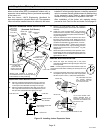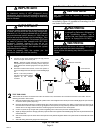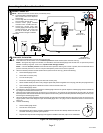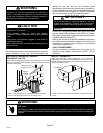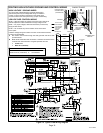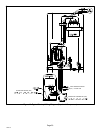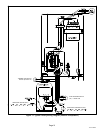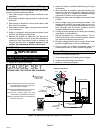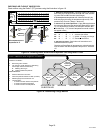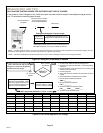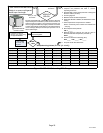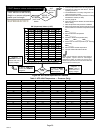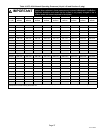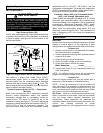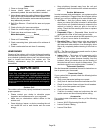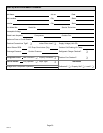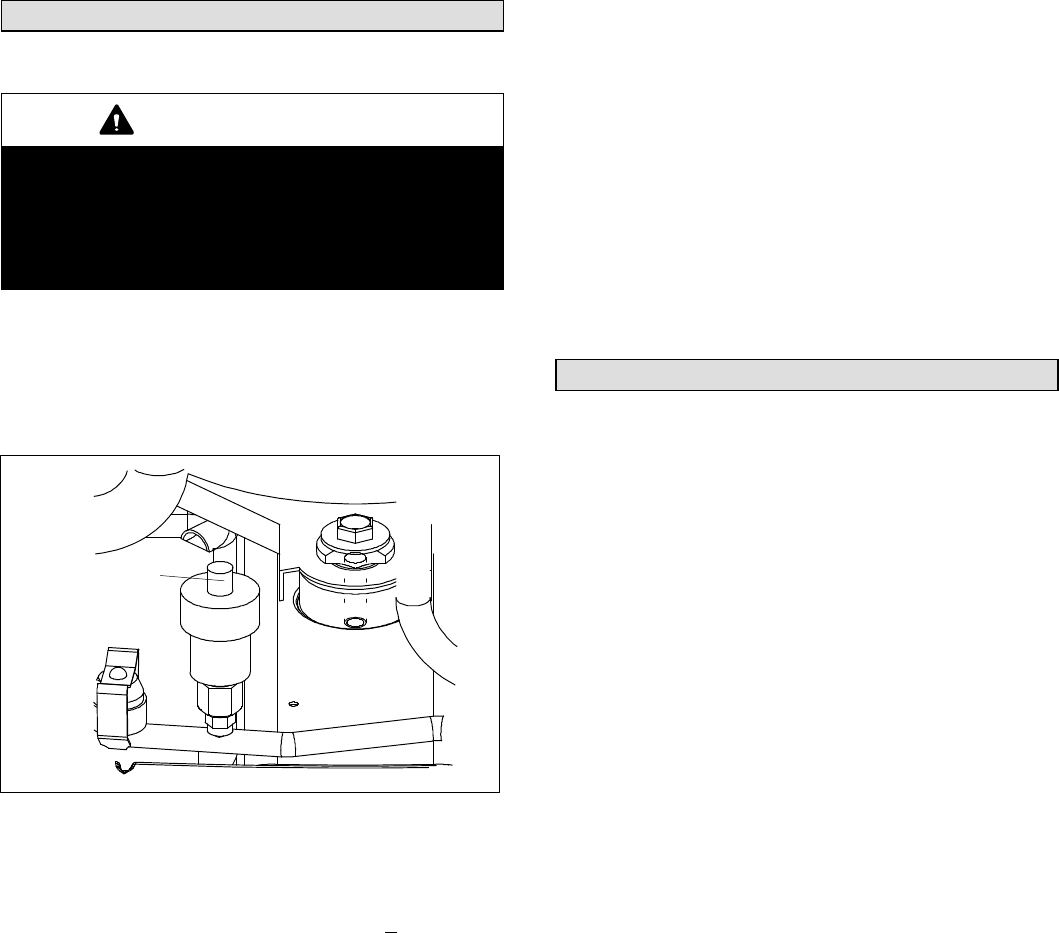
Page 28
506645−01
System Operation
UNIT COMPONENTS
IMPORTANT
Some scroll compressor have internal vacuum protector
that will unload scrolls when suction pressure goes
below 20 psig. A hissing sound will be heard when the
compressor is running unloaded. Protector will reset
when low pressure in system is raised above 40 psig. DO
NOT REPLACE COMPRESSOR.
High Pressure Switch (S4)
14ACX units are equipped with a high-pressure switch that
is located in the liquid line of the compressor as illustrated
in figure on page 2 and figure 25 for the location of the
manual reset button..
MANUAL RESET
BUTTON
Figure 25. High Pressure Switch (S4) Manual Reset
The switch is a Single Pole, Single Throw (SPST),
manual−reset switch which is normally closed and
removes power from the compressor when discharge
pressure rises above factory setting at 590 + 10 psi. The
manual−reset button can be identified by a red cap that is
press to preform the reset function.
Thermal Protection Switch (S173) Ċ Compressor
Mounted
Some units are equipped with a compressor mounted
normally closed temperature switch that prevents
compressor damage due to overheating caused by
internal friction. The switch is located on top of the
compressor casing (see figure 1). This switch senses the
compressor casing temperature and opens at 239−257°F
(115°C−125°C) to shut off compressor operation. The
auto−reset switch closes when the compressor casing
temperature falls to 151−187°F (66°C−86°C), and the
compressor is re−energized. This single−pole, single−throw
(SPST) bi−metallic switch is wired in series with the 24V Y
input signal to control compressor operation.
Crankcase Heater (HR1) and Thermostat Switch
(S40) (−041 through −060 models only)
These models are equipped with either a 40 or 70 watt
belly−band type crankcase heater. HR1 prevents liquid
from accumulating in the compressor. HR1 is controlled by
a single−pole, single−throw thermostat (SPST) switch
(S40) located on the liquid line (see figure 1 for location).
When liquid line temperature drops below 50°F the
thermostat closes energizing HR1. The thermostat will
open, de−energizing HR1 once liquid line temperature
reaches 70° F.
Maintenance
DEALER
Maintenance and service must be performed by a qualified
installer or service agency. At the beginning of each
cooling season, the system should be checked as follows:
Outdoor Unit
1. Outdoor unit fan motor is pre−lubricated and sealed.
No further lubrication is needed.
2. Visually inspect all connecting lines, joints and coils for
evidence of oil leaks.
3. Check all wiring for loose connections.
4. Check for correct voltage at unit (unit operating).
5. Check amp draw on outdoor fan motor.
Motor Nameplate:_________ Actual:__________.
6. Inspect drain holes in coil compartment base and
clean if necessary.
NOTE - If insufficient cooling occurs, the unit should be
gauged and refrigerant charge should be checked.
Outdoor Coil
Clean and inspect outdoor coil (may be flushed with a
water hose). Ensure power is off before cleaning.
NOTE Ċ It may be necessary to flush the outdoor coil
more frequently if it is exposed to substances which are
corrosive or which block airflow across the coil (e.g., pet
urine, cottonwood seeds, fertilizers, fluids that may contain
high levels of corrosive chemicals such as salts)
Sea Coast Ċ Moist air in ocean locations can carry salt,
which is corrosive to most metal. Units that are located
near the ocean require frequent inspections and
maintenance. These inspections will determine the
necessary need to wash the unit including the outdoor coil.
Consult your installing contractor for proper
intervals/procedures for your geographic area or service
contract.



